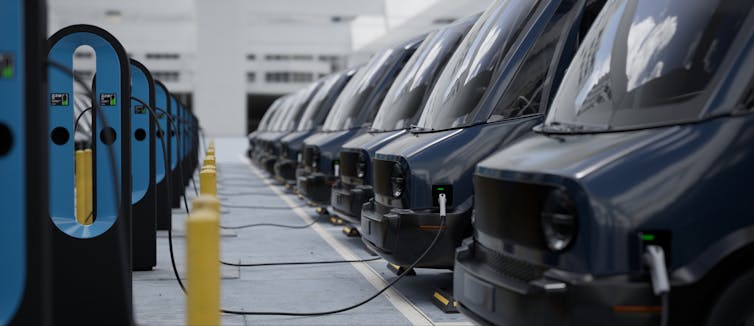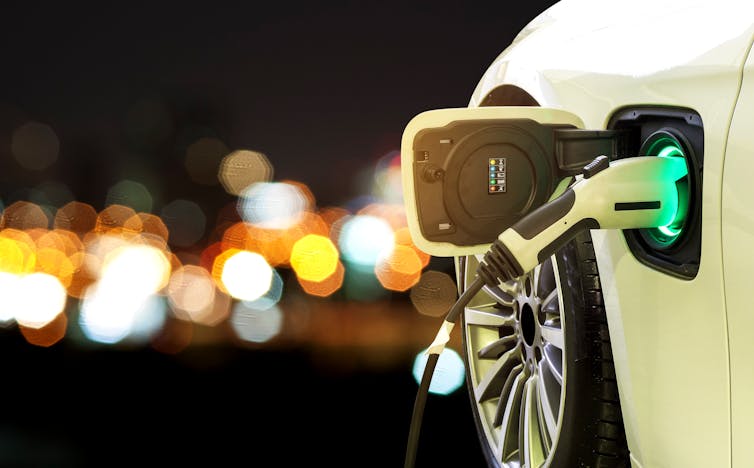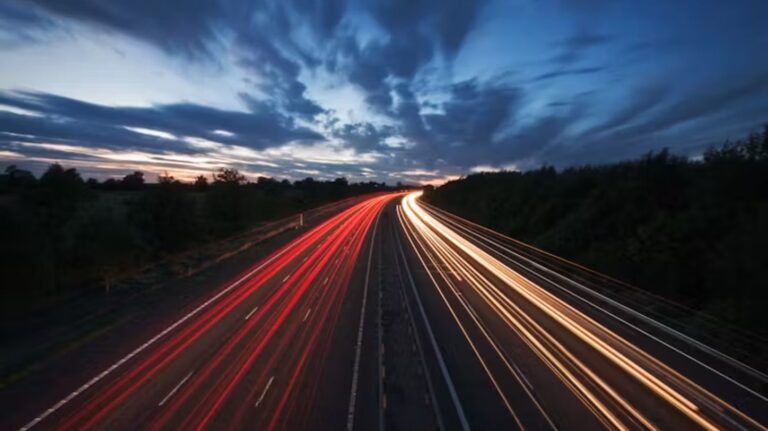If every car was electric, every single power station in the UK could be devoted entirely to powering them and it still wouldn’t be enough.
The UK’s pledge to reach net-zero emissions by 2050 hinges on replacing millions of petrol and diesel vehicles with cleaner alternatives. But transitioning to electric transport isn’t just about manufacturing new cars, installing chargers and so on. It’s a gargantuan energy generation challenge that could push the power grid to its limits.
In 2023, UK transport consumed about 46 million litres of petrol and diesel. If we convert that into electricity, it would be equivalent to 49.5 gigawatts (GW) of continuous power throughout a whole year. For perspective, this is about one-third more than the UK’s entire current electricity generation capacity.
In other words, every single power station in the UK could be devoted entirely to powering electric vehicles and it still wouldn’t be enough. But one might say we didn’t consider the efficiency of electric vehicles. Petrol and diesel engines waste about three quarters of their energy as heat, with only a small portion used to propel the car. Electric vehicles meanwhile waste only about one quarter.
Adjusting for this, the actual power needed if the UK went entirely electric drops to around 20 GW. It would still mean increasing today’s grid capacity by almost half (46%), corresponding to building 17 nuclear plants (1.2 GW each) or 5,800 skyscraper-sized wind turbines (3.5 MW each). Those wind farms would cost around £22 billion, while the nuclear plants would cost significantly more.
At the moment, less than 1% of vehicles in the UK are electric, which explains why there are no specific power issues – yet. But if the country did have a fully carbon-free fleet of vehicles, the associated surge in demand would strain infrastructure and risk large blackouts. California’s grid, for example, already faces stress during electric vehicle charging peaks, prompting warnings and forcing the state to put “managed charging” policies in place.

Massive upgrade needed
Most countries looking to switch to zero-carbon transport will need to massively upgrade their electricity grid and power plants. Renewable energy complicates matters as wind and solar can’t always meet demand spikes (you can burn more gas or coal when needed, but you can’t choose when the wind blows or the sun shines). Nuclear offers stable and massive output, but new plants can take decades to build and the public is often hostile.
Certain “smart” solutions could help things even if the grid itself isn’t overhauled. Electric vehicle batteries could be linked to the grid for instance, and used to store and supply power. Overnight, millions of cars will soak up electricity before releasing it when demand spikes again in the morning. Price discounts would encourage people to charge their cars at night, when demand for electricity is at its lowest.
This can help mitigate many of the issues related to wind and solar being intermittent. But it will cause batteries to deteriorate faster, and still won’t solve the problem of having to generate more electricity.

One underappreciated strategy is empowering households and businesses that generate their own electricity via solar panels, small wind turbines, or even micro-hydro systems. By 2035, with vigorous policies, these “prosumers” could supply up to 15% of the UK’s electricity, easing grid strain and reducing reliance on centralised funding. Such policies in Germany have lead its prosumer networks to already offset 10% of the national demand.
Without such decentralised efforts, the financial burden of grid upgrades will fall entirely on taxpayers, at staggering costs. The alternative is a huge rise in price of electricity, felt by all, and a stalled transition.
No time to delay
Generating more power remains the core issue. Without urgent action, the transition to low-carbon transport could stall – or worse, overload the energy system. The governments of France, the UK and some other countries have recently begun to discuss increasing energy production, but the focus is on meeting AI-related demands rather than electricity for the next generation of vehicles.
Critically, net-zero will only happen with strong transport and energy policies in place. Governments must increase grid capacity and incentivise small-scale renewable generation through tax breaks and specially-designed payments. The alternative – delaying and relying solely on public funds – is economically unviable and politically risky.![]()
This article was authored by Florimond Gueniat, Associate Professor in Mechanical Engineering, Birmingham City University. It is republished from The Conversation under a Creative Commons license. Read the original article.





